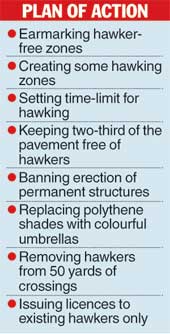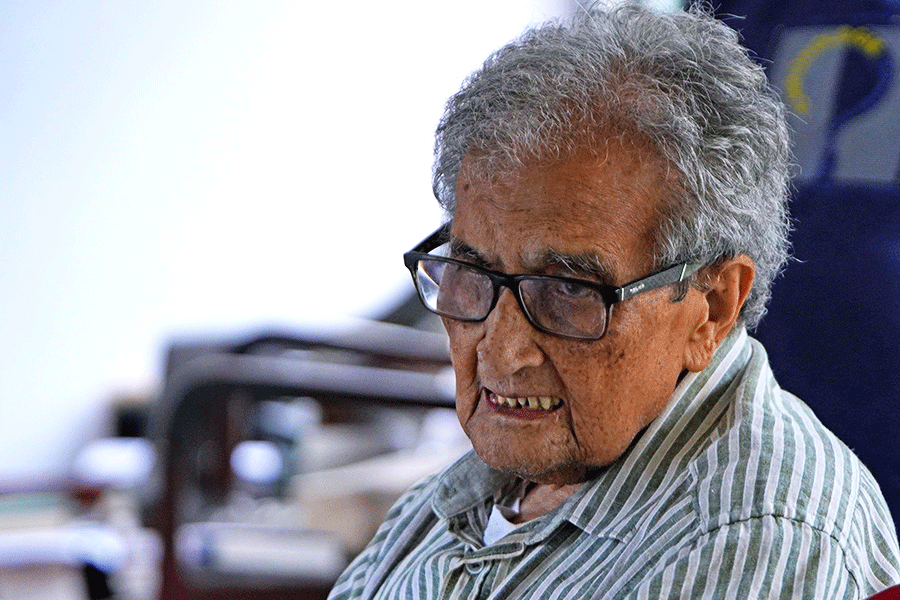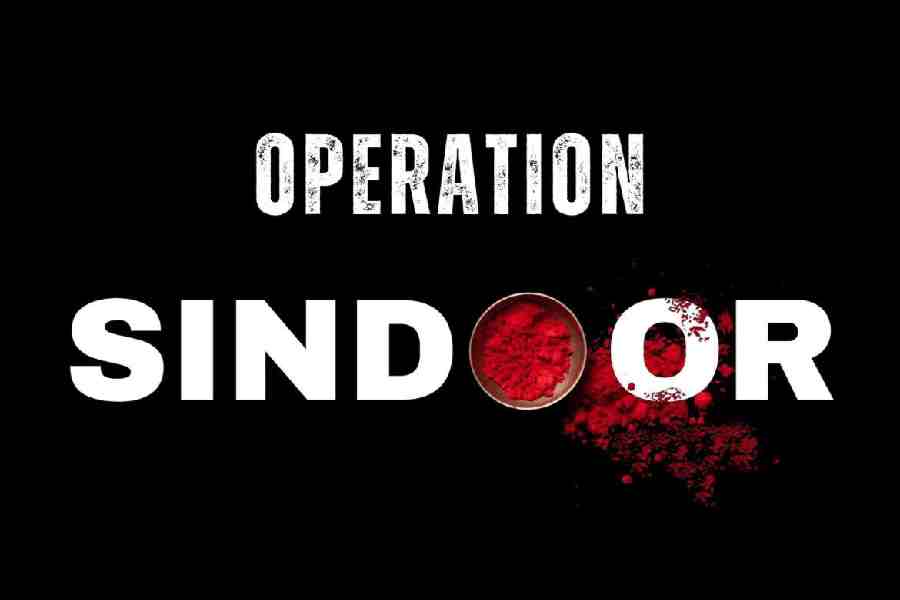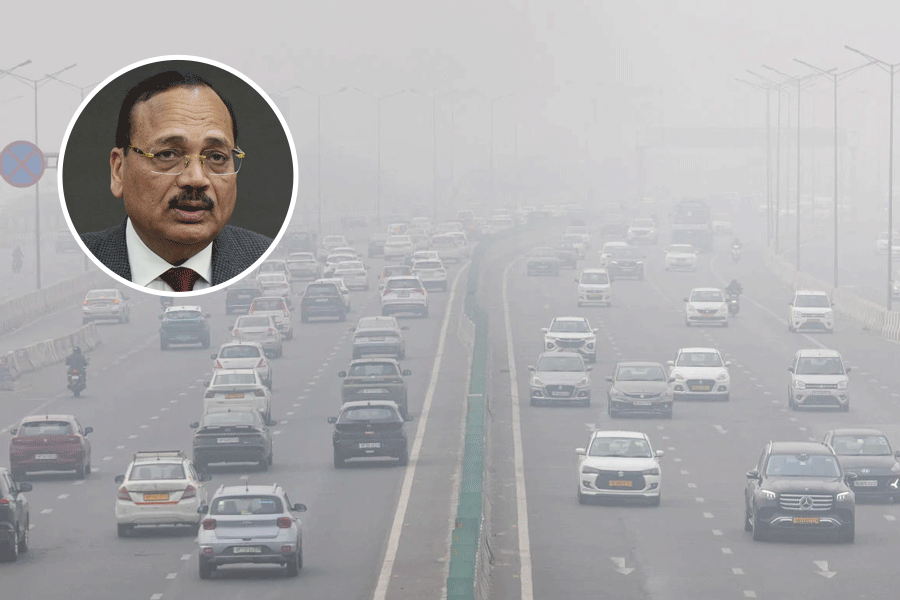 |
The unwritten clause in the cabinet decision to legalise Calcutta’s hawker raj is that you, the pedestrian, will ultimately forfeit the right to your pavement to the vendor who flaunts an identity card.
A senior official of the Calcutta Municipal Corporation said that “ambiguities, impracticalities and vested interests” in the government’s plan would ensure that hawkers soon became de facto title-holders of any pavement where they spread out their wares.
“They needn’t pay trade tax, they needn’t pay rent, they needn’t ever brave those eyewash police raids. The identity card will now be their licence to stay put where they are, hawking zone or no-hawking zone,” the official added.
Shaktiman Ghosh, the leader of the Hawker Sangram Committee, suggested that each of the identity cards issued to make the city’s 3.25 lakh-strong hawker army street legal should carry the number of the building in front of which a vendor did business. “Most pavements run in front of buildings. So the number of a building and the postal address can be on the vendor’s identity card. If there are several of them in front of that building, they can be referred to as hawker A, B, C,” he said.
According to the National Policy on Urban Street Vendors that the government claims is the model for its latest plan, cities are to be divided into restriction-free vending zones, restricted vending zones, no-vending zones and mobile vending zones. But the policy document does not mention anywhere that hawkers need to be given identity cards to regulate the street business.
“It’s easy to understand why the identity card is being introduced despite even the late Jyoti Basu stonewalling a previous move in 1995. The ground realities in the city are such that hawkers can neither be easily evicted nor restricted to specific zones. Try forcing a vendor doing roaring business on a Gariahat pavement for years to shift to another location and you will know what I mean,” said a CMC official.
Given the resistance, on what basis does the government intend marking restriction-free vending zones and no-vending zones in the city?
“The city officially already has 21 roads where hawkers are banned, but do they obey these restrictions? Identity cards will now legalise their presence even in those areas,” said Congress leader Subrata Mukherjee, who had tried evicting hawkers without much success during his stint as mayor.
The 21 thoroughfares from where hawkers were banned in 1996 as a prelude to the launch of Operation Sunshine include Jawaharlal Nehru Road, Lenin Sarani, Bidhan Sarani, MG Road, Rashbehari Avenue, Prince Anwar Shah Road, Sarat Bose Road, Camac Street and Brabourne Road.
A hawker rehabilitation programme was announced later and over Rs 8.12 crore spent on the scheme, which included building sheds for hawkers both in north and south Calcutta. Over 1,000 sheds built on Galiff Street for hawkers “evicted” from Hatibagan-Shyambazar are still vacant.
Minister Kanti Ganguly, who along with the late Subhas Chakraborty, had played a key role in Operation Sunshine, said on Wednesday that the drive was a failure for want of “a political consensus”.
So is there a consensus now on issuing identity cards to hawkers just to legalise their illegal presence?
“We had tried to rid 21 roads of hawkers by rehabilitating them elsewhere. It was a failure but that’s another story. This time, we are trying to regulate hawkers in a different, more practical way. But we need a political consensus once again,” Ganguly said.










